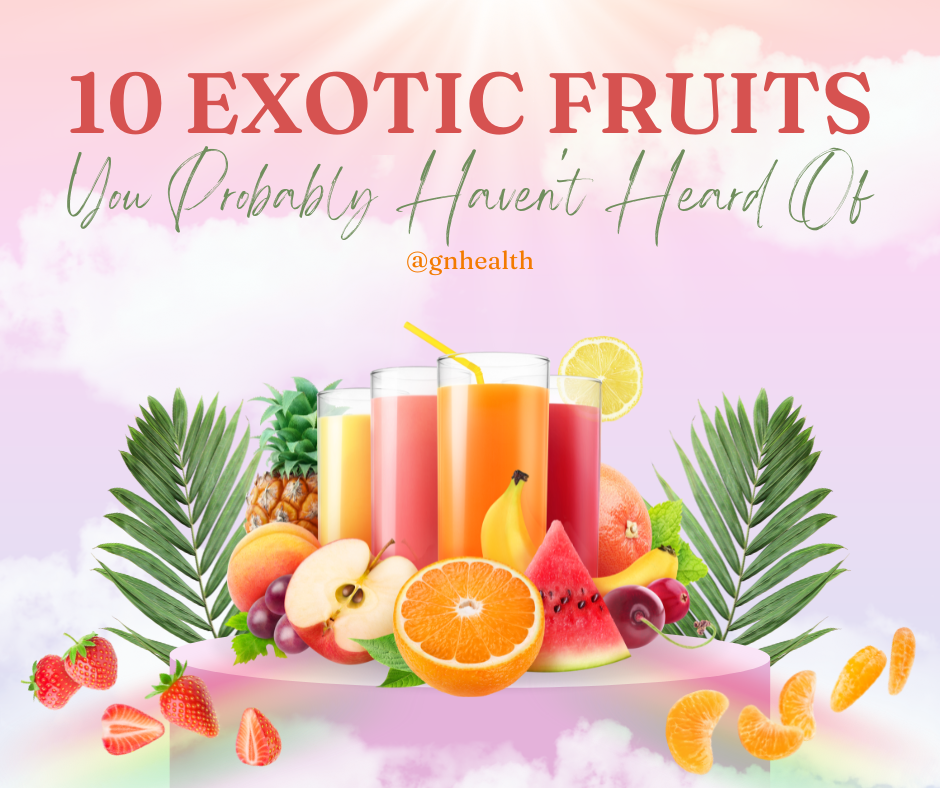
When we grow up being surrounded by our local fruits and vegetables, we start to assume that people across the globe know what they are too. However, that’s not always the case—some fruits require a specific environment to grow, making them harder to find in certain countries and continents. So, while almost everybody knows what an apple or an orange is because of how great they grow in every climate, some people might be shocked at exotic fruits that look positively foreign to them!
Today, we’ll be taking a look at some exotic fruits you might have never heard of. We hope you get a chance to sample them soon, as they’re just as tasty as local fruits!
1. Durian
Durian, a Southeast Asian fruit, is known for their extremely pungent smell that lingers in the air. It’s enough to put off people who aren’t familiar with it! However, once you get past the unusual smell, durians are extremely sweet and creamy. Known as the “king of the fruits” in certain regions, durians are exotic, heavy and spiky and look very formidable.
Interestingly, the taste of durian is described as a mix of almonds, cheese, garlic, and caramel. It can be used for both savory and sweet dishes. Durian is one of the most nutrient-dense fruits in the world, boasting a ton of vitamins, minerals, and antioxidants such as Vitamin C, Vitamin B6, manganese, potassium, copper, magnesium, niacin, and riboflavin.
2. Rambutan
Don’t be intimidated by the rambutan’s appearance! These fruits are furrier than they are spiky. Red and green on the outside, the rambutan is a semi-translucent on the inside with a large seed in the middle. They’re native to Malaysia but have experienced booming popularity recently around the world. You might even find some of them at your local farmer’s market!
Rambutans are rich in both soluble and insoluble fiber. Soluble fiber helps to absorb water as it passes through your digestive system, reducing the risk of diarrhea and constipation. Insoluble fiber, on the other hand, feeds the good bacteria in your gut, improving your digestive health.
3. Persimmon
Persimmons look like orange tomatoes, though the taste between the two fruits could not be any more different. While tomatoes are tart and slightly sweet, persimmons are extremely sweet and honey-like in flavor. Despite being small in size, these fruits pack a punch with every bite.
Persimmons are rich in flavonoid antioxidants. These chemicals are very good for your heart health, reducing the risk of heart attacks and heart failure, lowering cholesterol levels, decreasing inflammation around the body, and regulating blood pressure levels.
4. Mulberries
Mulberry trees are valued for both their leaves and fruit. The leaves are very important to Asian countries as they’re the only type of leaves silkworms eat—without mulberry leaves, there wouldn’t be any silk products at all! The fruit, on the other hand, can be used in a variety of ways. It can be made into wine, juice, team, jam, or eaten as is.
Mulberries kind of look like a bunch of blackberries mushed together. They come in red, white, and black colors and taste sweet and a tad woodsy.
5. Mangosteen
Mangosteens are red-purple fruits that are notorious for being extremely hard to open. However, once you manage to break into the center, you’ll be surprised to see white flesh that’s pretty sweet and tropical in flavor. It’s described as a mix of pineapple, peach, strawberry, and lychee.
One of the things the mangosteen is known for is promoting weight loss. Apparently, its high antioxidant content helps to boost metabolism, thereby slowing down weight gain and smoothing out the digestive process. It also helps to maintain regular blood sugar levels!
6. Sapodilla
Sapodilla is a fruit that’s native to Central America but has since been cultivated in countries all over the world including India and Thailand. Their trees can grow up to a whopping 98 feet (30 meters in height)!
The fruits themselves are small, egg-shaped, and light brown. The skin is pretty rough and will be soft or gritty in texture. However, despite their seemingly boring appearance, sapodillas are extremely sweet due to their high sugar content. Add a few slices of this to your ice cream, custard, or salads for some sweetness.
7. Dragon Fruit
Dragon fruit is a fruit that is as gorgeous as it is tasty! Featuring spiky red skin, white or red flesh, and a ton of edible black seeds, the dragon fruit is native to Central America. Its taste is described as a sweet cross between pears and kiwis.
Dragon fruits are extremely nutrient-dense. They are rich in fiber and magnesium, which are excellent for your digestive, nervous, and skeletal systems. They are also known for being effective against insulin resistance, which many people with obesity and diabetes face.
8. Starfruit
From the picture alone, you can see why starfruits are called starfruits. They are bright yellow and green fruits that come in sour and sweet varieties. They are very low in calories but rich in antioxidants, making them a good option for those wanting to boost their immune system and manage their weight.
Additionally, experiments on mice have shown that starfruit is effective at preventing liver damage. It reduces fat around your liver and also reduces the risk of liver damage. However, ask your doctor before adding starfruits to your diet—its high oxalate content might pose problems for those with kidney problems.
9. Cherimoya
Cherimoya, or custard apples, is a green, ridged fruit that’s filled with creamy, white flesh—hence the name ‘custard’ apple. Unlike other fruits that are cut open and munched upon, cherimoyas are eaten with a spoon just like you would eat custard or pudding. They’re said to taste like pineapples and bananas.
Just be careful not to overindulge—certain parts of the cherimoya can be dangerous if eaten in large quantities! To avoid this issue, just eat the white flesh and not the peel or seeds.
Did you know that cherimoya can help you become happier? The fruit is extremely rich in Vitamin B6, which boosts the production of serotonin and dopamine in the brain. Not only are these fruits exotic, they’re also happiness-inducing!
10. Kiwano
The kiwano is one of the most stunning, exotic fruits around! It’s yellow-orange on the outside and features a couple of horns, which is why it’s also called the horned melon. But don’t worry, they’re not sharp at all!
According to those who love this fruit, the bright green interior is quite soft and gelatinous, containing edible seeds. They say that the taste is akin to lemon and lime.
The kiwano is mostly made up of water, which makes it a very good snack to eat under the hot African sun. It’ll keep you cool and hydrated with not just its water content, but also its electrolytes!



